Todays’s article is about Philodendron Pertusum, also known as the Swiss Cheese plant or Monstera Deliciosa because of its huge leaves with holes.
Philodendron Pertusum is its old name for Monstera Deliciosa as it was originally thought to be from the Philodendron genus and not a Monstera.
Philodendron Pertusum Care
Philodendron Pertusum needs well-draining airy soil using peat, perlite, orchid bark, and charcoal. Water about once a week when the top 1 inch (2.5cm) is almost dry as it likes to stay slightly moist. Provide bright indirect light and temperatures between 64 to 71 degrees Fahrenheit (18 to 22 degrees Celsius). Fertilize using a liquid fertilizer every 2-weeks in spring and summer and once a month during the other seasons. Humidity around 50-60% is good, more is even better.
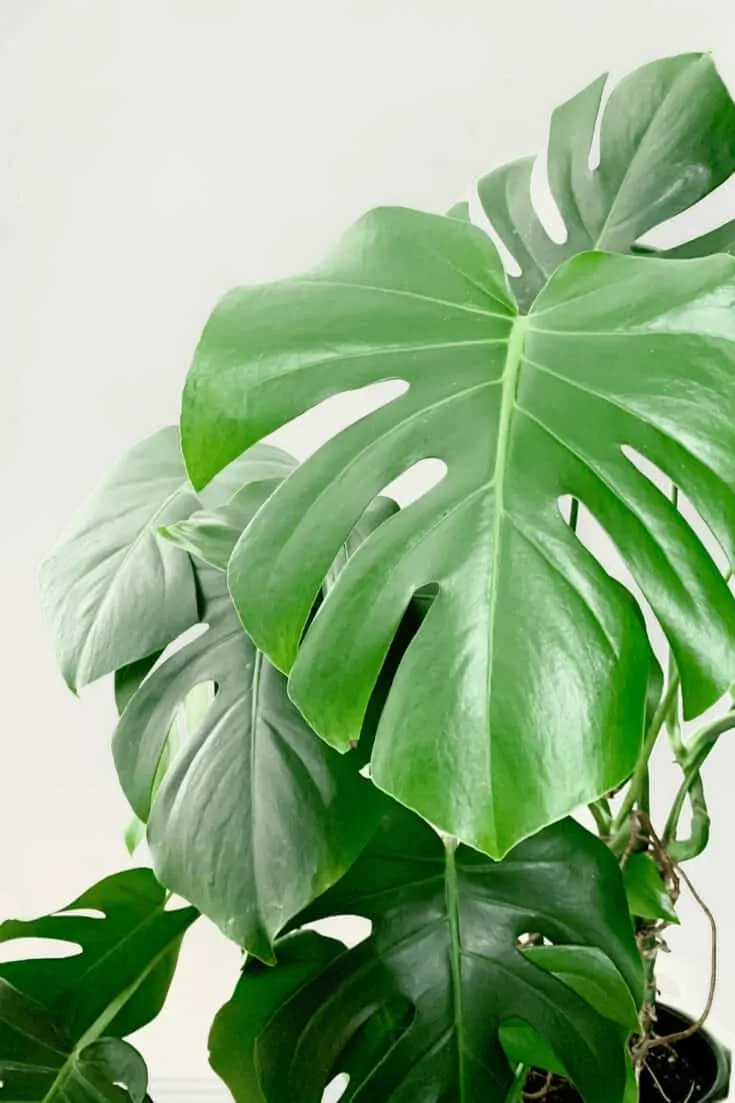
Philodendron Pertusum is now known as Monstera deliciosa
The Philodendron Pertusum originated from Southern Mexico and Guatemala; however, now it is found growing in several parts of the world. It belongs to the vast family of Araceae plants.
It has very few stems that develop leathery and perforated leaves. This plant even produces pineapple-like fruit; therefore it is sometimes called the Fruit Salad plant.
This plant is well known for its dramatic leaves that vary in lush shades of green and the seedlings that grow towards the dark until they find something to climb on.
This plant is very durable and adorns any empty corner of your house; therefore, you should definitely grow one as a houseplant.
Pertusum plant is considered very easy to care for, and this article will prove why.
Philodendron Pertusum Plant Care
Soil
Philodendron plants like Pertusum should be planted in a peat-based mixture that drains well. You can add perlite or orchid bark to amend your mix and improve drainage. Make sure the pot has drainage holes (at least one).
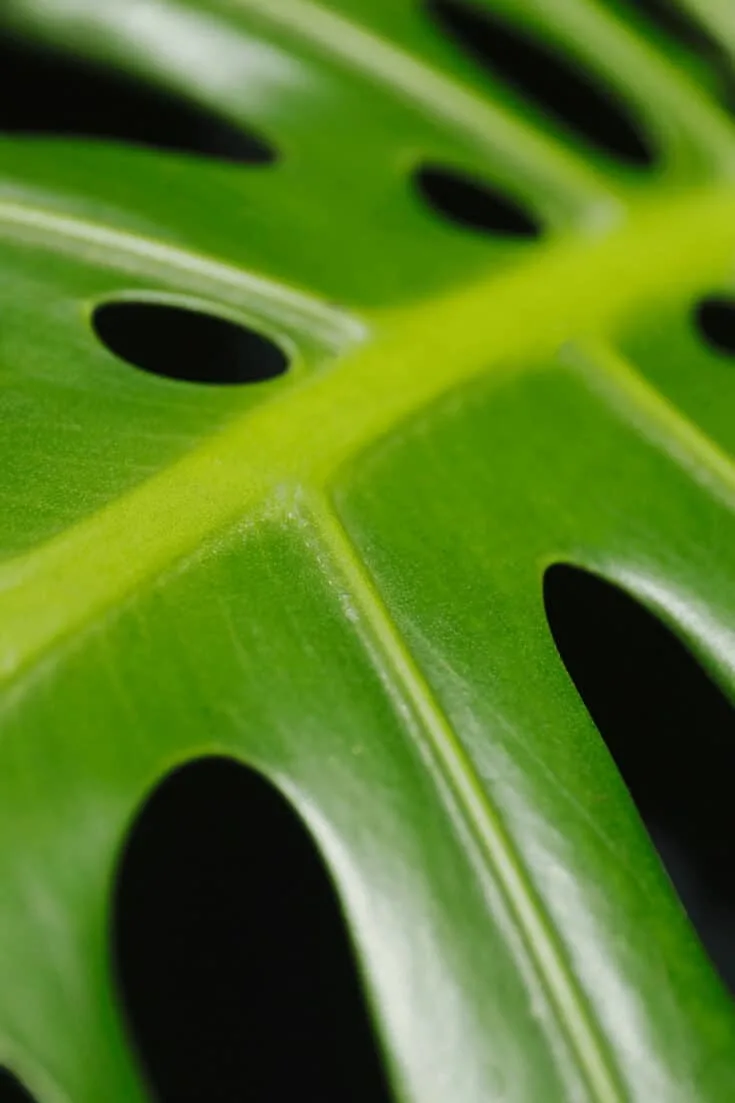
Philodendron Pertusum with its signature holes. The more the plant grows the bigger the leaves and holes get
Water
To water, Philodendron Pertusum remember the simple rule to always keep the soil moist and never allow the soil to get dried out completely.
I water my Philodendron Pertusum once a week, but my plant is situated in optimum conditions.
Watering is the most tricky part of Philodendron’s care; you have to maintain a watering frequency depending on your environment.
The two main factors that impact watering for Philodendron houseplants are temperature and light. Keep the following points in mind:
- Plants situated in higher temperatures need more water compared to the ones situated in moderate temperatures.
- Plants situated in more light need more water than those in low to medium sunlight.
Other factors like humidity and season also impact the amount of water needed for your Philodendron plant.
This species will require regular water from spring to summer. Whereas in winter, the Philodendron Pertusum needs very less water.
Light
Philodendron Pertusum prefers to grow in bright indirect light.
I would not recommend growing it in low sunlight because Philodendron plants need plenty of sunlight to grow well.
I keep my plant in bright but indirect sunlight.
Outdoors also you have to grow it in partial shade in USDA hardiness zones 10 and 11.
You can diffuse the sun rays in the following ways:
- Use a shade cloth.
- Install sheer curtains for your windows.
- Use window blinds to cover the windows during harsh sun hours.
- Use stained or tinted glass for your windows.
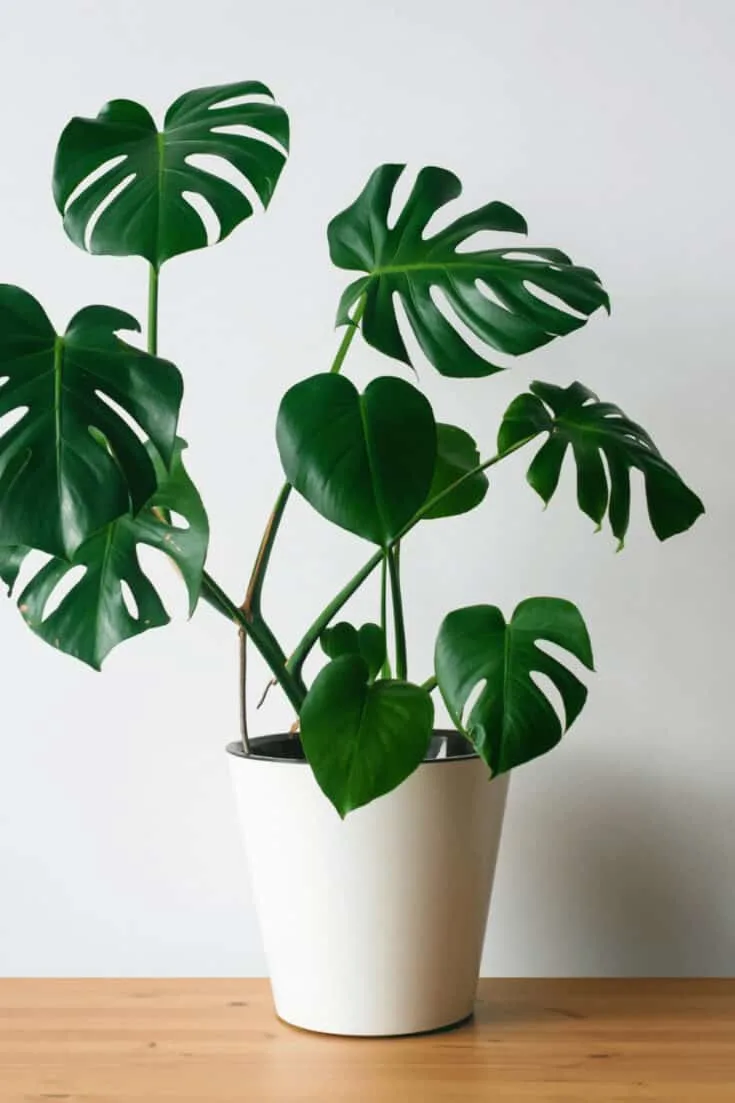
It is suggest to support your Philodendron Pertusum with a moss pole
Temperature
The Philodendron Pertusum likes to grow in temperatures ranging from 64 to 71 degrees Fahrenheit (18 to 22 degrees Celsius) during the daytime.
However, at night it can tolerate slightly lower temperatures.
Humidity
Most Philodendrons prefer a high humidity environment. But this one prefers moderate humidity.
You can maintain your indoor humidity levels of 50 to 60%.
To increase the household humidity, you can use several methods like misting, pebble-tray, or utilizing a humidifier.
Fertilizer
Almost all houseplants love some extra nutrition through fertilizer, including Philodendron Pertusum. Make sure you add fertilizer according to the instructions on the label.
As an over enthusiast plant lover, I once applied an extra dosage of fertilizer to my Philodendron.
It resulted in a disaster, and the final result was chemical burns on the roots.
Make sure you never overfertilize; in case unsure, apply less than required.
For the past two years, I have been using a standard liquid fertilizer once every two weeks during spring and summer and once a month in autumn and winter.
My plant has responded well to this treatment.
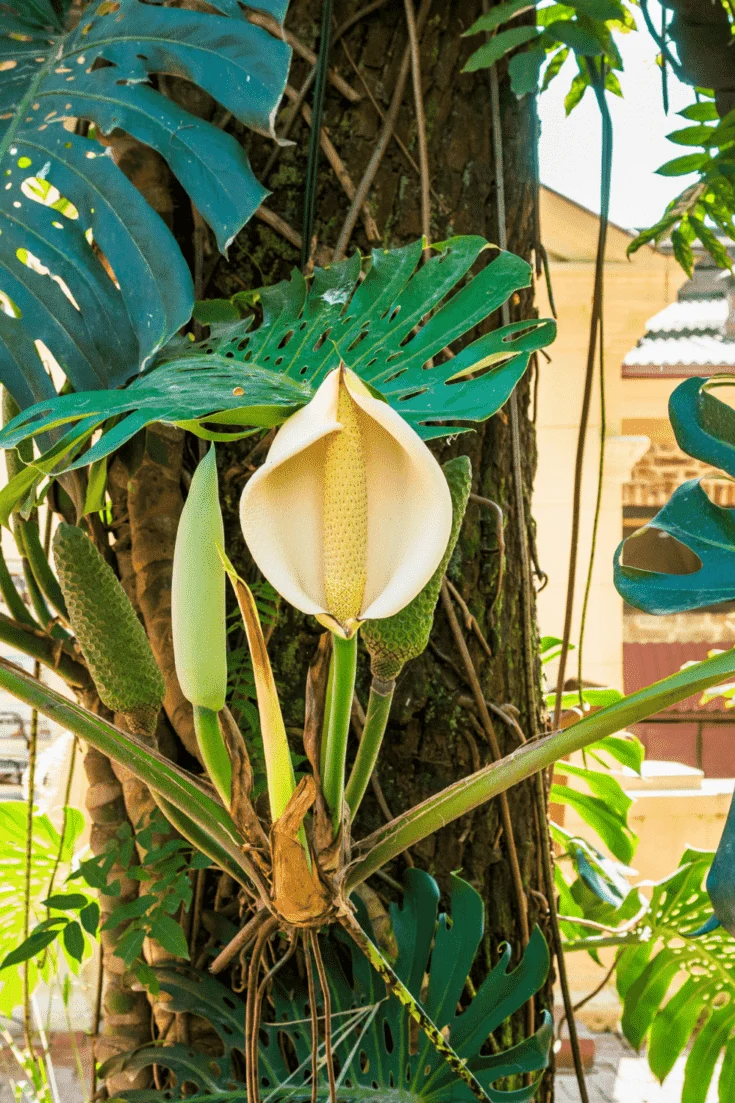
Philodendron pertusum is an aroid and produces a spathe and spadix called an inflorescence aka flower
Repotting
This plant needs repotting only when it has outgrown its pot or is suffering from any disease.
Once you notice this, transplant your Philodendron to a new pot that is a few inches large in depth and diameter.
Normally I repot my Philodendron after 2 years but refreshing the soil annually is mandatory.
Pruning
Overall this is a low-maintenance plant.
But you might have to give your plant a good pruning session to make it more appealing.
Pruning will also help your plant have more growth.
Early spring is the best time of the year to prune a Philodendron Pertusum.
You should use sterilized materials while pruning else there is a risk of infection or disease spread.
I always trim the yellow, decaying leaves because these drain the plant’s energy.
Some gardeners like trimming the aerial roots, but I suggest that you simply tuck them inside the soil.
They are going to help strengthen the root system of your plant.
Propagation
Based on my experience, the most reliable method to propagate the Philodendron Pertusum is air layering.
Follow the following steps for successful propagation.
- All you need is a healthy Philodendron Pertusum, clean shears, thread, plastic sheet or bag, and sphagnum moss.
- Make sure all the tools are cleaned and disinfected. You can do this with rubbing alcohol or neem oil.
- Choosing a healthy plant is very important. Because taking cuttings from an unhealthy, diseased plant will result in a failed propagation.
- Choose a stem that has a healthy leaf and aerial roots growing on it. Make a small cut just below the leaf node. Make sure the stem is at least 4 inches long.
- The next step is to wrap the leaf node, cut, and aerial roots with sphagnum moss. Moisturize the moss and wrap it in a clear plastic bag or sheet. The moss layer should be 1 – 2 inches thick.
- Secure the plastic with thread (or ties) but make few holes on the plastic. This will create a mini version of a greenhouse, and the holes will ensure good airflow.
- Always keep the moss moist by misting it with water via the holes on the plastic. Moisture is the most important factor in the success of this method.
- Open the plastic every few days to check for root development.
- After a few weeks(2-3 weeks), you will notice tiny, hair-like roots. Now it’s time to separate the cutting from the mother plant. After that, plant the cutting in soil.
- Care for the baby plant as you would for a healthy, mature Philodendron Pertusum.
Blooms
This species almost never blooms as an indoor houseplant. However, in nature, it grows white-colored flowers.
Followed by the blooming season in spring and summer, the Pertusum plant produces pineapple-like fruit that’s edible.
However, this happens after the plant is at least three years old. The fruit is 9 inches in size and dull, deep green in color.
You can assume the fruit is ripe once the base is wrinkled; simply wrap the fruit in a bag.
After a few days, the scales will separate, leaving the fruit behind. In addition to the taste, the fruit also has a sweet scent.
Growth
This is a fast-growing evergreen plant. Outdoors or in nature, this plant can grow to a height of 90 ft (30m), and as an indoor houseplant, it reaches 6ft.
This plant has foliage similar to Monstera plants. It has huge leaves that have several splits on both sides of the leaf margins.
The splits are deeply curved, giving this plant a unique look. The leaves vary in beautiful shades of dark and light green.
The shape of the leaves resembles a heart and is 12-26 inches in size.
These leaves on this species will not grow as large as those of Monstera Deliciosa. Some growers believe that the leaves grow more like Pothos.
The plant gets its nickname Swiss Cheese plant because of the holes in the leaves.
It has an upward growth habit.
Therefore I would suggest installing vertical support like a totem or sphagnum moss pole.
This will help your plant grow well in the right direction. Remember its natural habitat, the aerial roots cling to other trees, so the plant needs the same support as a houseplant.
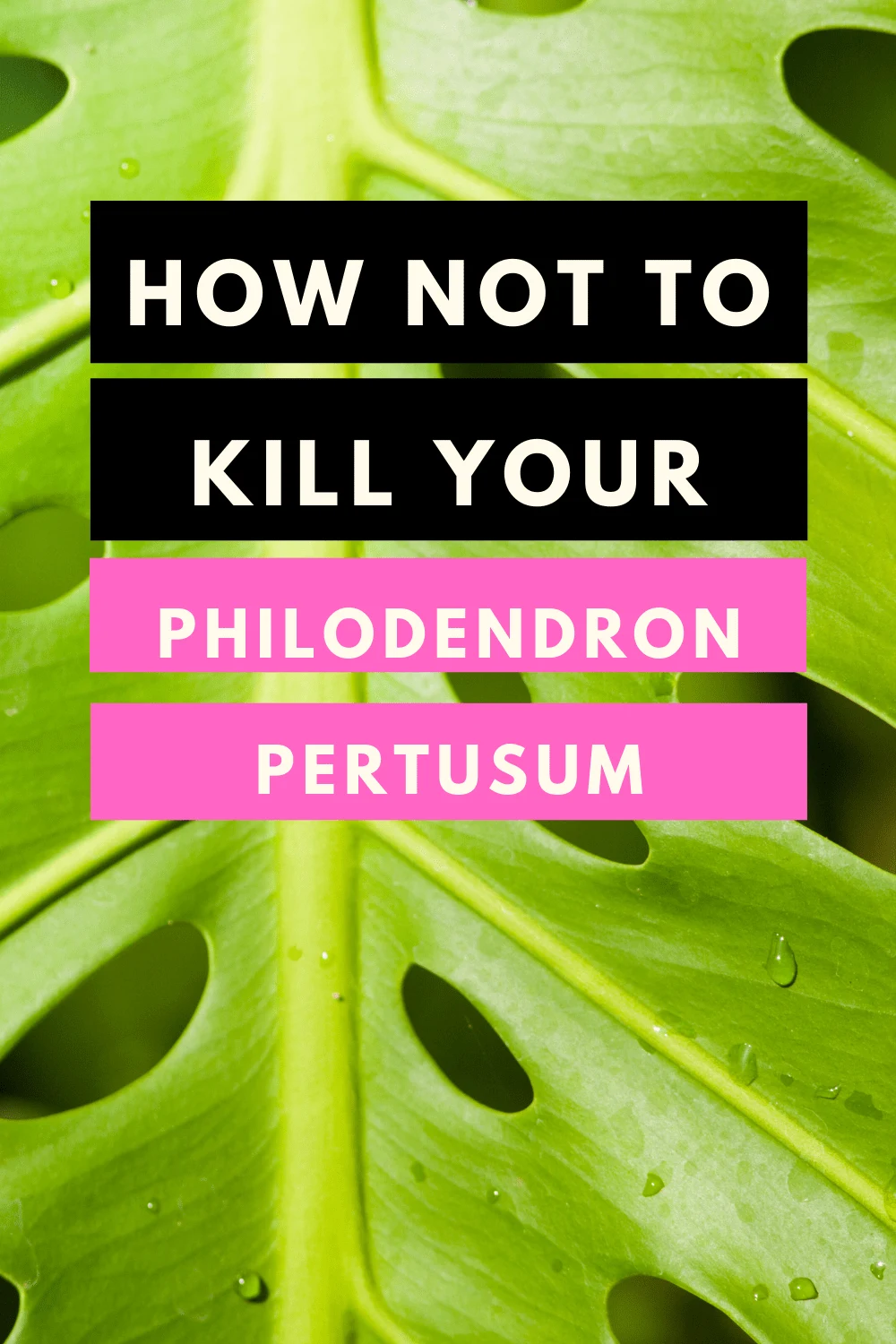
Philodendron Pertusum Care
Common Problems for Philodendron Pertusum
Fertilizer Burns
Applying an extra dosage of fertilizer will burn the roots damaging the growth of your houseplant.
Make sure you dilute your fertilizer to half strength to prevent these burns.
Furthermore, try to fertilize your Philodendron only once a month in growing months.
Excessive Sun
Philodendrons are sun-loving plants, but they can tolerate the sun to a certain extent.
Exposing Philodendron Pertusum to direct sun will eventually burn the leaves.
The first sign of the excessive sun is the browning of leaves.
Grow yours in the moderate sun with a filtered bright light to protect it from any sun damage.
Cold Damage
Most varieties in the Philodendron plant family are not winter-hardy; therefore, they don’t do well in cold temperatures.
Philodendron Pertusum is frost-sensitive also.
For this reason, you have to bring the outdoor planters inside for winter else the plant will die.
Cold temperatures can stop the growth of your plant if the temperature drops below the minimum.
But you can easily avoid cold damage by maintaining warm indoor temperatures and bringing the outdoor plants inside.
Avoid keeping your plant next to an air conditioner or draughty door/window.
Drooping
In its natural habitat, Philodendron Pertusum is a climber and uses trees as support.
But as an indoor plant, this plant starts drooping downwards if no support is provided.
Tie the stalks with a bamboo stick or any other moist support, and your plant will stop drooping.
Vertical support is crucial for climbing varieties of Philodendrons.
Leaf Drop
Leaf dropping is a very common phenomenon for most houseplants. Philodendron Pertusum does not like to be moved or disturbed frequently.
Change of environment shocks the plant, which results in leaf drop.
If you have recently moved or repotted your Philodendron Pertusum, give it some time to adjust to the new environment.
In the future, only move your plant when necessary and avoid unnecessary repotting.
Overwatering
Philodendron Pertusum is prone to overwatering and root-rot. Overwatering can severely damage your houseplants. The main symptoms of the overwatered plant are:
Suffocated roots – wet soil or overwatering will suffocate the roots from the oxygen supply.
Roots are the major source of food and water exchange.
Once the roots cannot perform their function well, your houseplant will be deprived of necessary nutrients.
Brown leaves – too much water will make the leaves soft and limp. The extra water will also cause the plant to have brown, wilting leaves.
Blisters – when plants absorb extra water, the leaves start building water pressure.
This results in blisters and lesions. Later these blisters will transform into tan or brown colored growth.
These make your plant look ugly; therefore, it is best to trim the infected leaves.
Slow growth – overwatering will eventually result in stunted growth because it disturbs the natural growth habit of the plant.
The best solution is to make sure you check your plant regularly and water once the soil mixture is dry.
Spider Mites
Spider Mites are tiny bugs that are brown, red, black, or tan in color.
These are hardly visible, but the webbings can be clearly seen on the undersides of the leaves and at leaf joints.
These pests will feed on the plant tissues or sap of your Philodendron Pertusum.
Your plant will eventually have less growth with yellow leaves. They love feeding on any new growth.
Therefore you should get rid of them instantly.
Take your infected plant outdoors and blast it with a strong water stream.
This will remove the adults and eggs from the plant. Make sure you do not skip the lower sides of the leaves because that’s where the mites hide.
For further protection, use neem or any other horticulture oil.
Try to use organic ones because chemicals can further damage your plant.
Spray the neem oil on the plant leaves and stems. Repeat this every week until the mites are gone.
As a final step, maintain good plant hygiene by regularly cleaning your plant.
Aphids
Aphids are white sap-sucking insects. They have 5000 species that can infect any houseplant, including Philodendron Pertusum.
Aphids need to be eradicated immediately because they spread from one plant to another.
They leave honeydew that attracts other bugs like ants. Wash the plant with water to get rid of adult aphids.
Now you have to spray the plant with neem oil that will kill the remaining pests.
Tips for Growing a Philodendron Pertusum
- Make sure you keep the soil moist because Philodendron Pertusum likes to stay on the moist side.
- You might be tempted to fertilize your plant but remember, overfertilizing only damages the Philodendron Pertusum.
- Make sure you never let the sun directly fall on the leaves.
- This plant really appreciates regular misting.
- Philodendron Pertusum likes some direct sun in the winter months. This helps the plant in photosynthesis.
- Provide good air circulation to prevent disease and pests.
- Position your plant a few feet away from the window.
Frequently Asked Questions about Philodendron Pertusum
Where is the best location for Philodendron Pertusum?
This plant can decorate any space, but a living room corner or entryway would be perfect for admiring its beauty.
How can I maintain my Philodendron Pertusum?
You can easily maintain your Philodendron Pertusum by keeping it in a sunny window with filtered light. Water only when the top one or two inches of the soil is dry.
My Philodendron Pertusum has started losing its leaf color; what’s wrong?
Your plant is suffering from a lack of sunlight. Move it to a position with better sunlight. I would recommend taking your plant outside for a few hours every now and then. This will help the plant soak some sun.
How can I make my Philodendron Pertusum bushier and fuller?
Prune your plant well by pinching the tips of the leaves. This will encourage more growth and make your plant bushier. Make sure you prune the areas where you want to have more growth.
When is the best time to water the Philodendron Pertusum?
You can water your Philodendron Pertusum right after 2/3 of the topsoil has dried out. Letting the plant further dry can create water stress.
What are the growing seasons of this plant?
This plant grows actively in spring as well as summer.
How can I keep the leaves of my Philodendron Pertusum clean?
Cleaning the leaves is important for good growth. Prepare a mixture by adding a drop of a dishwasher in a few cups of water. Dip a clean cloth in this solution and regularly clean the leaves of your Philodendron Pertusum.
Is Philodendron Pertusum toxic to pets?
Sadly this beautiful plant is toxic to dogs as well as cats. Therefore keep it at a high location away from your furry friends.
Can this plant thrive in average household temperatures?
The average household temperature is perfect for growing Philodendron Pertusum.
What is the difference between Monstera Deliciosa and Philodendron Pertusum?
These two have similar looking leaves, but they are different plants. One major difference is that the leaves on Philodendron Pertusum have a protective layer called cataphyll.
How many hours of bright indirect sunlight does Philodendron Pertusum need?
This plant likes 6 to 8 hours of sunlight every day.
Is the Philodendron Pertusum the same plant as Monstera Deliciosa?
Philodendron Pertusum is the old name for the Monstera Deliciosa as the plant was first believed to be of the Philodendron genus and not of the Monstera genus. This was corrected later on.
Conclusion
Philodendron Pertusum adds a touch of greenery as well as serves the purpose of decoration.
With its split-leaf, ovate foliage, this plant will serve as a stylish centerpiece within your house.
You can even enjoy the sweet-smelling fruit but make sure you eat it when it’s ripe. Unripe fruit can cause stinging and irritation in the mouth.
This robust climber has all the specialties of a perfect houseplant, beautiful leaves, easy care.
But the only drawback is that it’s toxic to pets; therefore, take extra care if you have pets or children in your house.
Make sure to also read our article about Monstera Care to get to know about the best care hacks.


